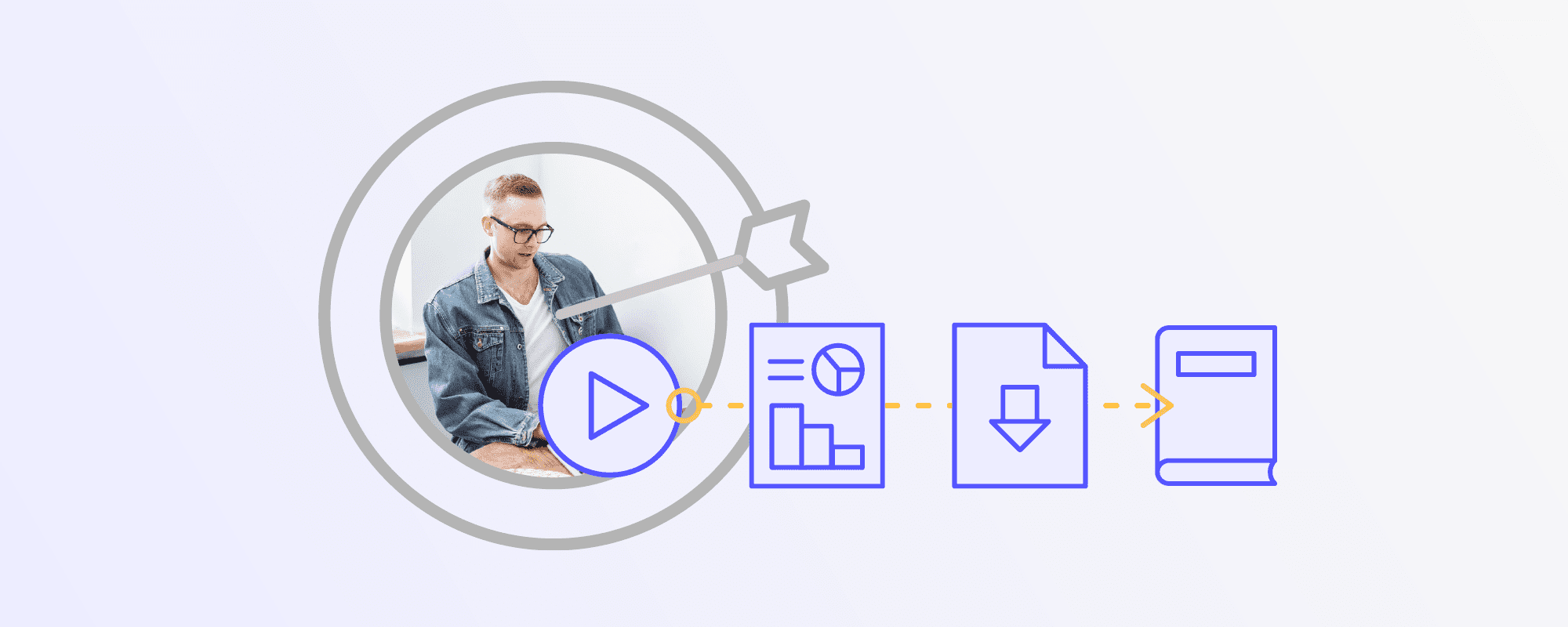
PathFactory Use Case
ABM | Account Based Marketing: Explore best practices for your maturity stage
Stage 1 | Experimental
What it looks like: “We have a target account list we’d like to reach out to, and we have a good idea what kind of content they’d like to see”.
- We have identified their top target accounts using their defined criteria (for example: industry, vertical, persona, or job role).
- We have 3-5 pieces of content for at least one defined group.
- We are fully aligned with sales on the strategy to get started.
- We have also formed a pilot sales group for testing.
Best practices to implement:
- Identify high-performing content assets for your target accounts and personas.
- Personalize the CTAs for each target account in your content tracks, email outreach , etc.
- Drive web traffic to targeted PathFactory campaigns
- Consider creating net-new content that is relevant to a 1:few audience.
- Revisit your form strategy and enable content self-service through gated & ungated assets.
- Measure engagement for content and accounts; link performance to specific industries.
- Equip your pilot group with PathFactory experiences, or train them to use PathFactory for Sales .
Stage 2 | Operational
What it looks like: “We already use a few marketing tools that help us with ABM . We know who our target accounts are and the best ways to reach them.”
- We use ABM-specific technology to drive marketing efforts.
- We are actively reaching out to multiple targeted accounts across multiple channels (e.g. email, social, phone).
- We have increased the amount of content we send to target accounts.
Best practices to implement:
- Using campaign successes and QBR reporting to identify high-performing content assets with high conversion.
- Guiding your accounts to the information they’re searching for by highlighting trending topics across visitors.
- Using engagement and conversion metrics to learn more about your visitors’ buying committee.
- Setting up automatic “fast moving buyer” alerts so you can follow up with prospects.
- Using plugins for content distribution within outreach tools like Gmail or Salesloft.
- Integrate with 6sense or DemandBase to sync analytics across platforms.
- Leverage account engagement insights to enable Revenue teams in sales efforts.
Stage 3 | Amplified
What it looks like: “We’ve been using ABM forever and we’re a well-oiled machine. I’m not sure what else we can do to improve!”
- We have seen success and can measure future planned activities using defined success criteria.
- We are actively targeting several accounts and have sent sales multiple qualified leads.
- We have expanded use of PathFactory to our entire sales org. Our sales team uses the insights during customer outreach.
Best practices to implement:
- Refining intent data to target existing accounts and reach out to new ones.
- Using Salesforce to feed engagement reporting at both the contact and account level, while enabling your sales team to follow up with packaged content.
- Auto-generating targeted content for every stage of the buyer’s journey.
- Scaling your outreach with omnichannel targeting at the account level using your best-performing content.
- Leveraging Segments and Routes to guide targeted accounts to customized content experiences across the site and advertising channels.
- Expanding or creating 1:few and 1:many experiences as well as new 1:1.
- Enabling sales team to follow up w/ pkgd content directly from Salesforce (PathFactory for Revenue Intelligence)*
- Scaling ABM experiences at program level and account with data on highest performing assets.
Contact your CSM to learn more about leveling up your ABM programs and how PathFactory can help set you up for scalable success.
